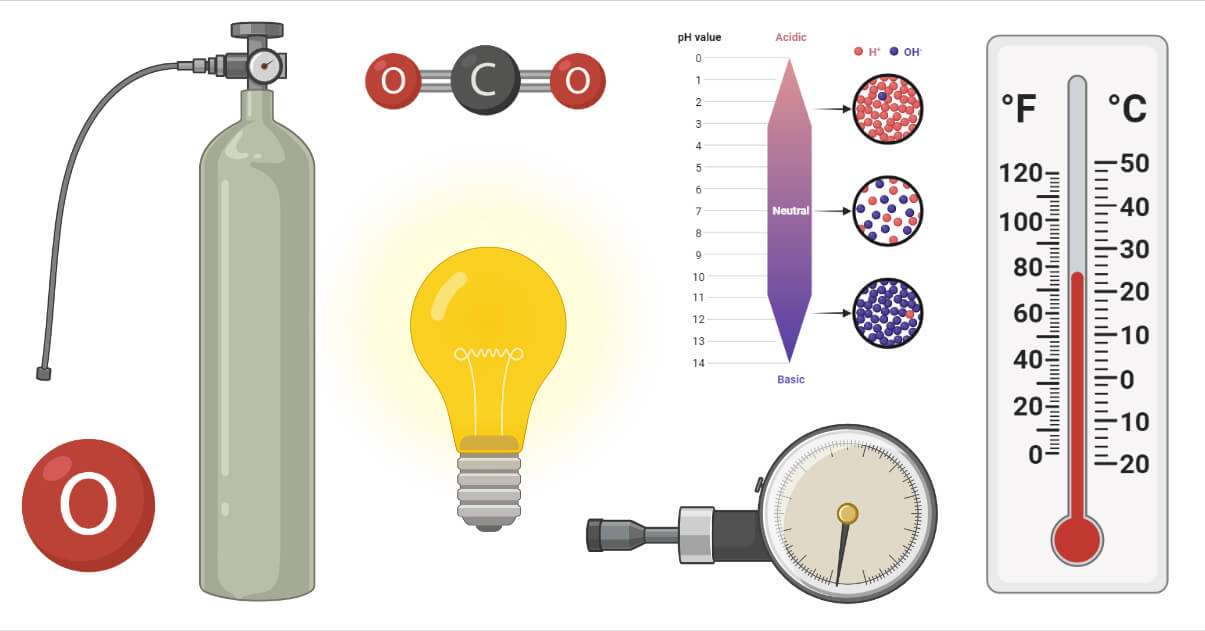- With respect to humans, the term growth refers to an increase in size; for example, going from a tiny newborn baby to a large adult.
- Although bacteria do increase in size before cell division, bacterial growth refers to an increase in the number of organisms rather than an increase in their size.
- Bacterial growth can be defined as an orderly increase of all the chemical components of the cell.
- Cell multiplication is a consequence of growth that leads to an increase in the number of bacteria making up a population or culture.
- Most bacteria divide by binary fission in which the bacteria undergo cell division to produce two daughter cells identical to the parent cell.
- Bacterial growth can be equated to cell number: one bacterium divides into two, these two produce four, and then eight, and so on.
Interesting Science Videos
Generation time
- The growth rate of a bacterium is measured by measuring the change in bacterial number per unit time.
- Generation time is the time required for a bacterium to give rise to two daughter cells under optimum conditions.
- The generation time for most of the pathogenic bacteria, such as E. coli, is about 20 minutes.
- The generation time is longer (i.e., 20 hours) for Mycobacterium tuberculosis and longest (i.e., 20 days) for M. leprae.
- A bacterium replicates and multiplies rapidly producing millions of cells within 24 hours.

Factors Affecting Growth of Bacteria
The growth of microorganisms in the body, in nature, or in the laboratory is greatly influenced by temperature pH, moisture content, available nutrients, and the characteristics of other organisms present.
Oxygen
Bacteria on the basis of their oxygen requirements can be classified broadly into aerobic and anaerobic bacteria.
Aerobic bacteria:
They require oxygen for their growth. They may be:
- Obligate aerobes—which can grow only in the presence of oxygen (e.g., P. aeruginosa).
- Facultative aerobes—which are ordinary aerobes but can also grow without oxygen (e.g., E. coli). Most of the pathogenic bacteria are facultative aerobes.
- Microaerophilic bacteria—those bacteria that can grow in the presence of low oxygen and in the presence of low (4%) concentration of carbon dioxide (e.g., Campylobacter jejuni).
- Some fermentative organisms (e.g., Lactobacillus plantarum) are aerotolerant but do not contain the enzyme catalase or superoxide dismutase. Oxygen is not reduced, and therefore hydrogen peroxide (H2O2) and nascent oxygen (O2) are not produced.
Anaerobic bacteria:
- Obligate anaerobes are the bacteria that can grow only in the absence of oxygen (e.g., Clostridium botulinum, Clostridium tetani, etc.).
- These bacteria lack superoxide dismutase and catalase; hence oxygen is lethal to these organisms.
Carbon dioxide
- The organisms that require higher amounts of carbon dioxide (CO2) for their growth are called capnophilic bacteria.
- They grow well in the presence of 5–10% CO2 and 15% O2.
- In candle jar, 3% CO2 can be achieved.
- Examples of such bacteria include H. influenzae, Brucella abortus, etc.
Temperature
The optimum temperature for most of the pathogenic bacteria is 37oC.
The optimal temperature, however, is variable; depending on their temperature range, growth of bacteria is grouped as follows:
- Psychrophiles: These bacteria are cold loving microbes that grow within a temperature range of 0–20o Most of soil and water saprophytes belong to this group.
- Mesophiles: These are moderate temperature loving microbes that grow between 25oC and 40o Most of pathogenic bacteria belong to this group.
- Thermophiles: These are heat loving microbes. They can grow at a high temperature range of 55–80o B. stearothermophilus is an example.
pH
- Most pathogenic bacteria grow between pH 7.2 and 7.6.
- Very few bacteria, such as lactobacilli, can grow at acidic pH below 4.0.
- Many food items, such as pickles and cheese, are prevented from spoilage by acids produced during fermentation.
- V. cholerae is an example of the bacteria that can grow at an alkaline (8.2–8.9) pH.
Light
Depending on the source of energy bacteria make use of, they may be classified as
- Phototrophs (bacteria deriving energy from sunlight)
- Chemotrophs (bacteria deriving energy from chemical sources).
Osmotic pressure
- Microbes obtain almost all their nutrients in solution from surrounding water.
- Hence factors such as osmotic pressure and salt concentration of the solution affect the growth of bacteria.
- Bacteria by virtue of mechanical strength of their cell wall are able to withstand a wide range of external osmotic variations.
- Organisms requiring high osmotic pressures are called osmophilic bacteria.
- Sudden exposure of bacteria to hypertonic solution may cause osmotic withdrawal of water, leading to osmotic shrinkage of the protoplasm (plasmolysis).
- On the other hand, sudden transfer of bacteria from concentrated solution to distilled water may cause excessive imbibition of water leading to swelling and bursting of cell ( plasmoptysis).
References
- Parija S.C. (2012). Textbook of Microbiology & Immunology.(2 ed.). India: Elsevier India.
- Engelkirk, P. G., Duben-Engelkirk, J. L., & Burton, G. R. W. (2011). Burton’s microbiology for the health sciences. Philadelphia: Wolters Kluwer Health/Lippincott Williams & Wilkins.
- Sastry A.S. & Bhat S.K. (2016). Essentials of Medical Microbiology. New Delhi : Jaypee Brothers Medical Publishers.
- Trivedi P.C., Pandey S, and Bhadauria S. (2010). Textbook of Microbiology. Pointer Publishers; First edition
- Murray, P. R., Rosenthal, K. S., & Pfaller, M. A. (2013). Medical microbiology. Philadelphia: Elsevier/Saunders.

Wow this is useful.
Use full to all
A very good piece of information and a great website.
this might be a stupid question but what happens if bacteria gets too much water? Is that possible?
Good stuff
Wao I always find this useful whenever am stuck🙂🙂
I love this
i like it everything are accessible in this page bravo.